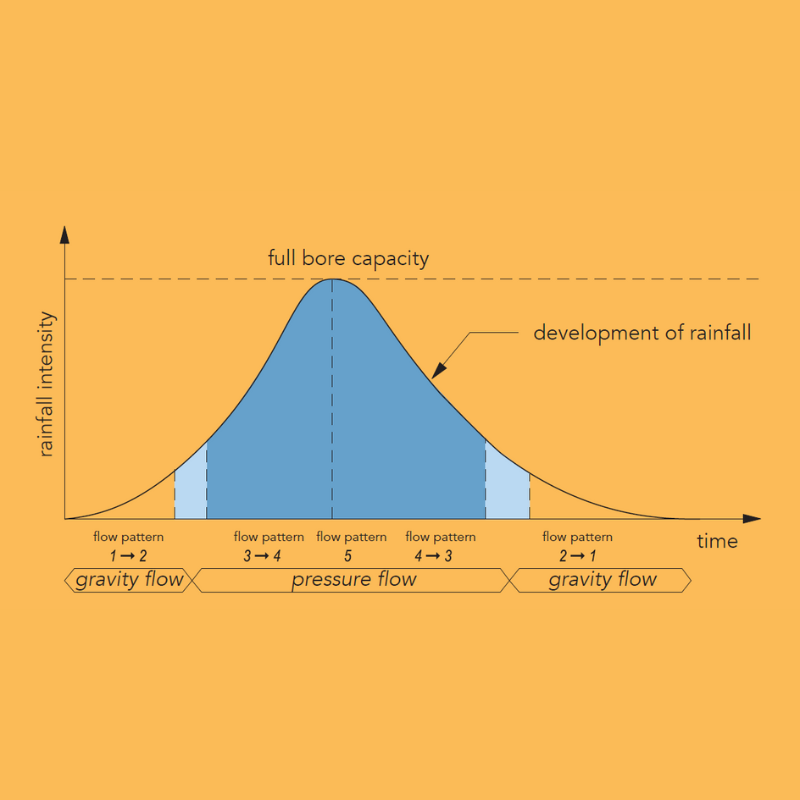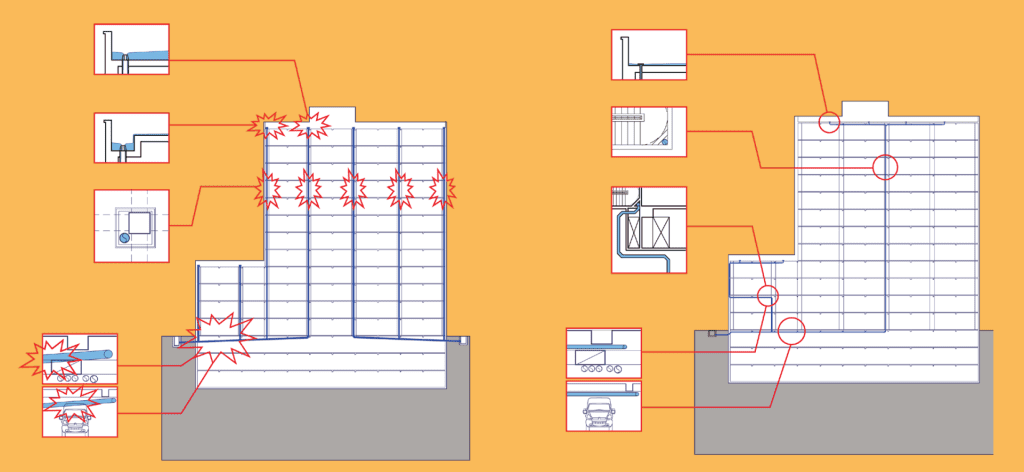WHAT IS SIPHONIC ROOF DRAINAGE SYSTEM, AND HOW DOES IT WORK?
A siphonic system, also known as a siphonic roof drainage system or siphonic roof drainage, is a method of collecting and draining rainwater from rooftops, especially in commercial and industrial buildings. It is an efficient and gravity-based system that relies on the principles of siphon action to quickly remove large volumes of rainwater from the roof and transport it to a collection point or drainage system.
Behind the Siphonic System is a basic engineering principle
The natural hydraulic head provides the energy required for water transport from one location to another. To maintain the proper functioning of a siphonic system and ensure that different portions of a siphonic system are appropriately balanced, a detailed analysis of head losses, velocity, and pressure in the system is performed.
A siphonic system, also known as a siphonic roof drainage system or siphonic roof drainage, is a method of collecting and draining rainwater from rooftops, especially in commercial and industrial buildings. It is an efficient and gravity-based system that relies on the principles of siphon action to quickly remove large volumes of rainwater from the roof and transport it to a collection point or drainage system.
Behind the Siphonic System is a basic engineering principle
The natural hydraulic head provides the energy required for water transport from one location to another. To maintain the proper functioning of a siphonic system and ensure that different portions of a siphonic system are appropriately balanced, a detailed analysis of head losses, velocity, and pressure in the system is performed.
RAINFALL AND THE PRODUCTION OF FLOW IN THE SIPHONIC SYSTEM
In a properly dimensioned siphonic system, the production of diverse flow patterns and eventually full bore flow is a natural process. A well-designed siphonic system achieves the full benefit of pressure-flow with no external energy source or moving mechanical parts.

RAINFALL AND THE PRODUCTION OF FLOW IN THE SIPHONIC SYSTEM
In a properly dimensioned siphonic system, the production of diverse flow patterns and eventually full bore flow is a natural process. A well-designed siphonic system achieves the full benefit of pressure-flow with no external energy source or moving mechanical parts.

Flow Pattern 1 : Wavy Flow
The flow pattern within the siphonic system is similar to that of a gravity channel flow, i.e., non-pressure flow, during the first and late stages of rainfall with minimal rain.

Flow Pattern 2: Pulsating Flow
Hydraulic plugs begin to form inside the pipes as the rainfall rises. In the system, there are minor signs of pressure.

Flow Pattern 3: Plug Flow
As the rain falls, many hydraulic plugs from inside the pipe, converting the flow pattern into a pressure flow.

Flow Pattern 4: Bubble flow
The pipes quickly fill up with water. Despite the presence of air bubbles, the system maintains a consistent pressure flow.

Flow Pattern 5: Full Bore Flow
When the pipe is entirely submerged in water and reaches full bore flow, the Full bore flow system reaches optimum functional capacity.
GRAVITY VS SIPHONIC SYSTEM



